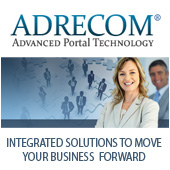Web Content Management Best Practices
From WCM platforms and WCM point solutions to integration of web analytic, most businesses these days are constantly trying to change their web content management systems in order to meet the demands of their customers' needs and expand their market. Having a dynamic vibrant online presence is crucial for companies in today's world economy. But the details of creating and maintaining a web site are a harrowing and challenging task for many business owners. A web content management platform can simplify the process. This practice offers you a platform that will work in any type of situation. As long as you know how to customize and configure the platform of the CMS program, you can edit until you are completely satisfied. This practice is often simply called “frameworks”. Additionally, they offer users full capabilities. This includes basic presentation and basic content management and delivery options.
Web Content Management Point Solution focuses on the software such as integrated online marketing. This practice concentrates on marketing automation and user experience optimization. The web content management capabilities of the program may include integrated analytic, multivariate A/B testing, and integration of social media. In today’s day and age, many people want to know who visit their website. This practice is known as Integration of Web Analytic. This practice can help them determine the success of their website as well as determine what things need to be changed. Most people expect their WCM to provide engaging and profitable user experiences. By doing so, they need to analyze the behaviors of website viewers.
Since the popularity of social networks such as MySpace, Facebook, and Twitter have increased in usage since their inception, people have used and relied on social media to expand their business ventures and opportunities. As a result, businesses want their web content management to feature built in social capabilities. This includes micro blogging, social networking, alternate identity communities, commenting, and tagging.
CSM includes many benefits to running a business more efficiently. Not too long ago, getting a website to run and function was extremely time consuming. Creating a basic design for your website could take 6 months up to a year. Thanks to CSM, you can launch your website in a matter of days, or even hours. The most important reason for utilizing a web content management system is the cost. Most updates are handles in-house and you are not required to pay high consulting fees in order to maintain your website. Even though some CMS options can be expensive to implement, many of them are free software management tools distributed under the open-source licensing rules.
A lot of companies change hosting providers once every three-to-five years. Transferability is crucial if you decide to move your information to a different provider. You need to learn how if you decide to make a transfer. Most content management systems have software management tools like an easy “export” option, making it simple to change hosting providers, or even website management software options.
When it comes to support, there are two fundamental options you need to consider for selecting a CSM: proprietary website management software or open source website content management software such as Joomla or Drupal. Why? Because whichever option you decide to choose, almost all of them provide excellent support for any problems you may encounter. Particularly, the open-source options have large user communities that are active in forums. This means that almost any problem you encounter has been addressed by someone.
CMS may be the simplest way to update information without coding. However, systems with the updated software tools offer more options. The newer content management systems incorporate other internet software tools like a document management system. A document management system allows users to share important business documents easily across your intranet, which allows group members to update the documents without needing to email new versions to every member.
Security is one of the most concerns that a website host will have. . A content management system automatically keeps scrupulous records of when pages are updated, and who is updating them. That way, you can keep track and note any unauthorized changes. The open-source software management solutions in particular benefit from having a large user base, so that hundred or even thousands of users are looking for bugs and security holes for each system, ensuring that any problems are quickly addressed.
Most CMS solutions use a split structure. In other words, the design and feel of the site are stored in a separate location from the information. This can save countless hours when it is time to update the look of your site, particularly if you have a large site with hundreds of pages. You can simply change the look one time, and it is automatically changed site-wide.
In a traditional website structure, a single user name was used for an entire site. So, if a user needed rights to one page, they had access to all the other pages. The only way to restrict access was to separate all the documents and webpages into separate directories. However, web content management systems can assign different rights to each page; in other words, a user or department can have access to edit only certain pages. This is particularly helpful for a document management system, wherein only certain users should have editing permissions, but all users need to view the documents. Most solutions also offer options for “super users” that have access to any and all pages, regardless of where they are on the server.
One of the most perplexing aspects of today's online community is Search Engine Optimization, or SEO. Everybody wants to know the secret to being the first one or two hits on Google or other major search engines. Content management systems can substantially improve your positioning by dynamically generating search-engine friendly code like Meta tags. Additionally, many search engines rate sites higher when they are regularly updated. Because CMS sites are so easy to maintain, they usually have a much higher percentage of new content compared to traditional static sites.









